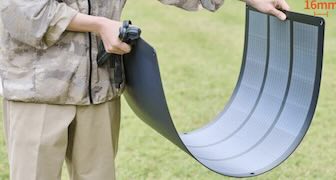Jul 30 (nationworldnews.com) - Sudden strong currents can be fatal while swimming in the sea. An AI system should recognize them and automatically call for help.
The so-called surge currents or rip currents occur suddenly: the narrow water current is localized and is driven away from the shore via waves. Inexperienced swimmers who get caught in such a stream quickly tire in the struggle and panic and risk their lives. The suction takes them out to sea, way too far back to shore. These currents are a common cause of rescue operations on beaches.
In Kanagawa Prefecture, south of Tokyo, a video-based AI system is designed to help identify these life-threatening currents and alert lifeguards. Such rip currents account for 60 percent of drowning deaths in Kanagawa, Japanese newspaper The Mainichi reports.
Current monitoring is done via a webcam mounted on a pole, which identifies the currents and swimmers around them. The system then automatically sends a notification to the lifeguard’s smartwatch, who can then initiate a rescue operation.
The AI system was developed by the Japan Lifesaving Association in conjunction with Chuo University in Tokyo. The team collected flow data for six months in the winter of 2021 to train the system. Current controls are in action at Yuigahama Beach in Kamakura City, a beach popular among surfers. ...continue reading















